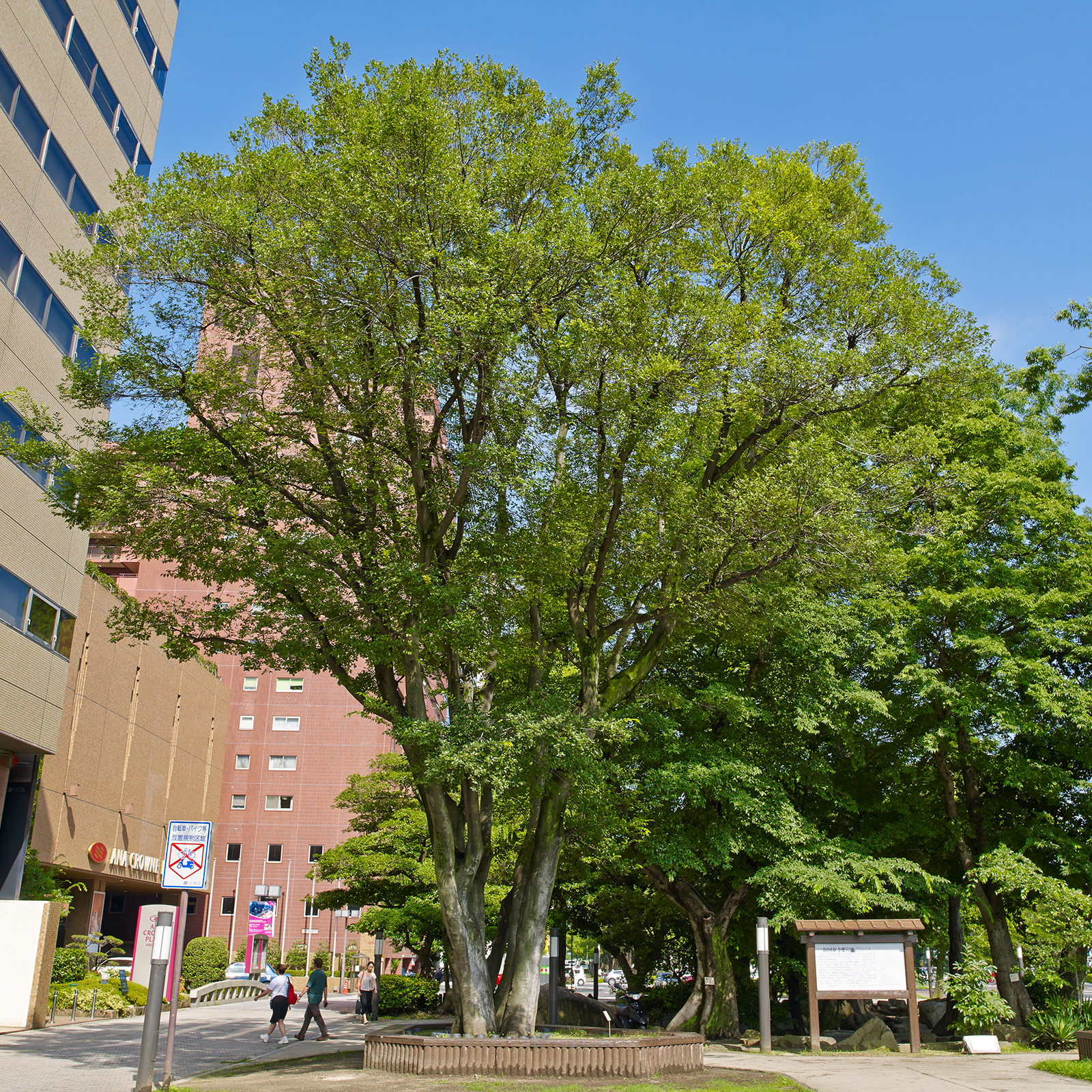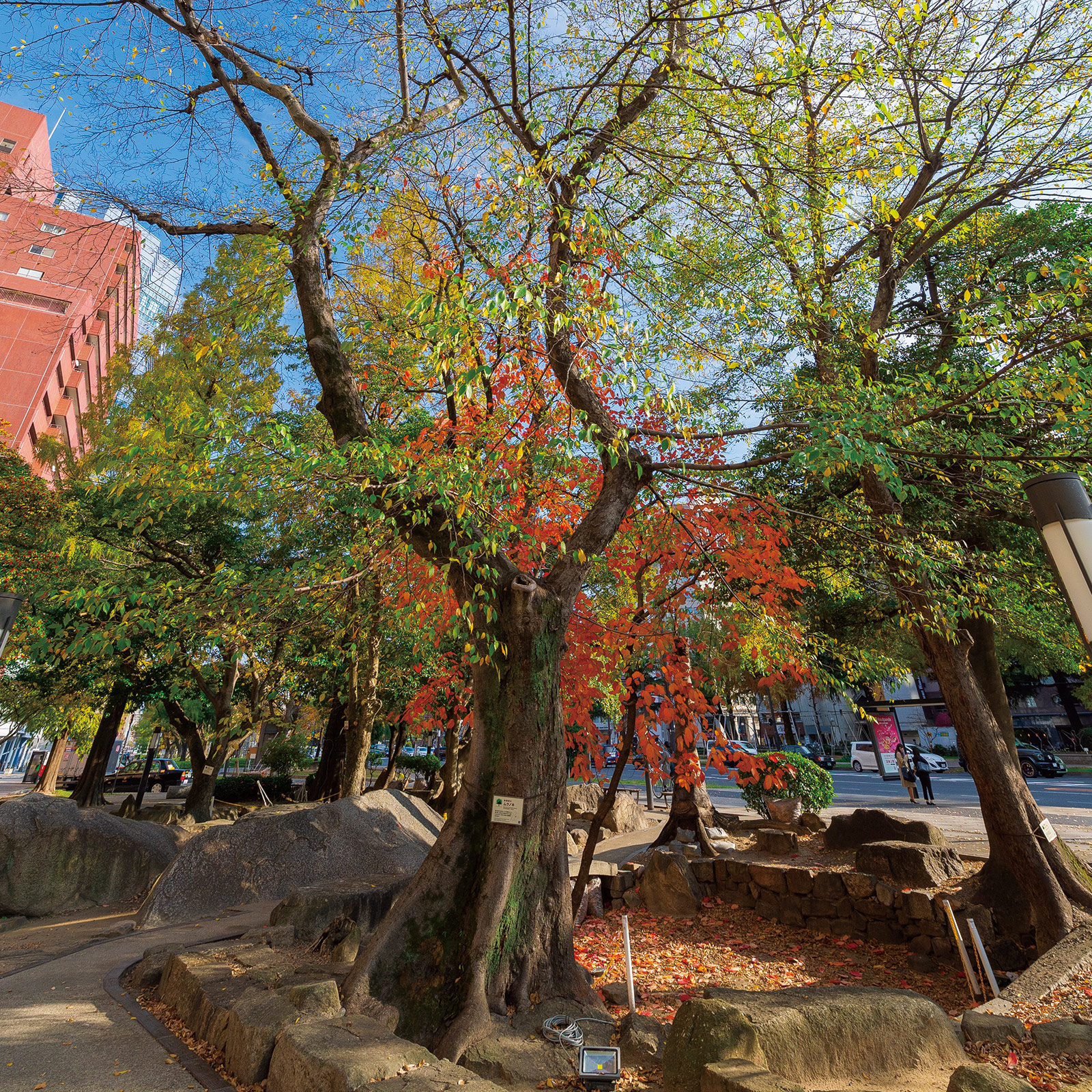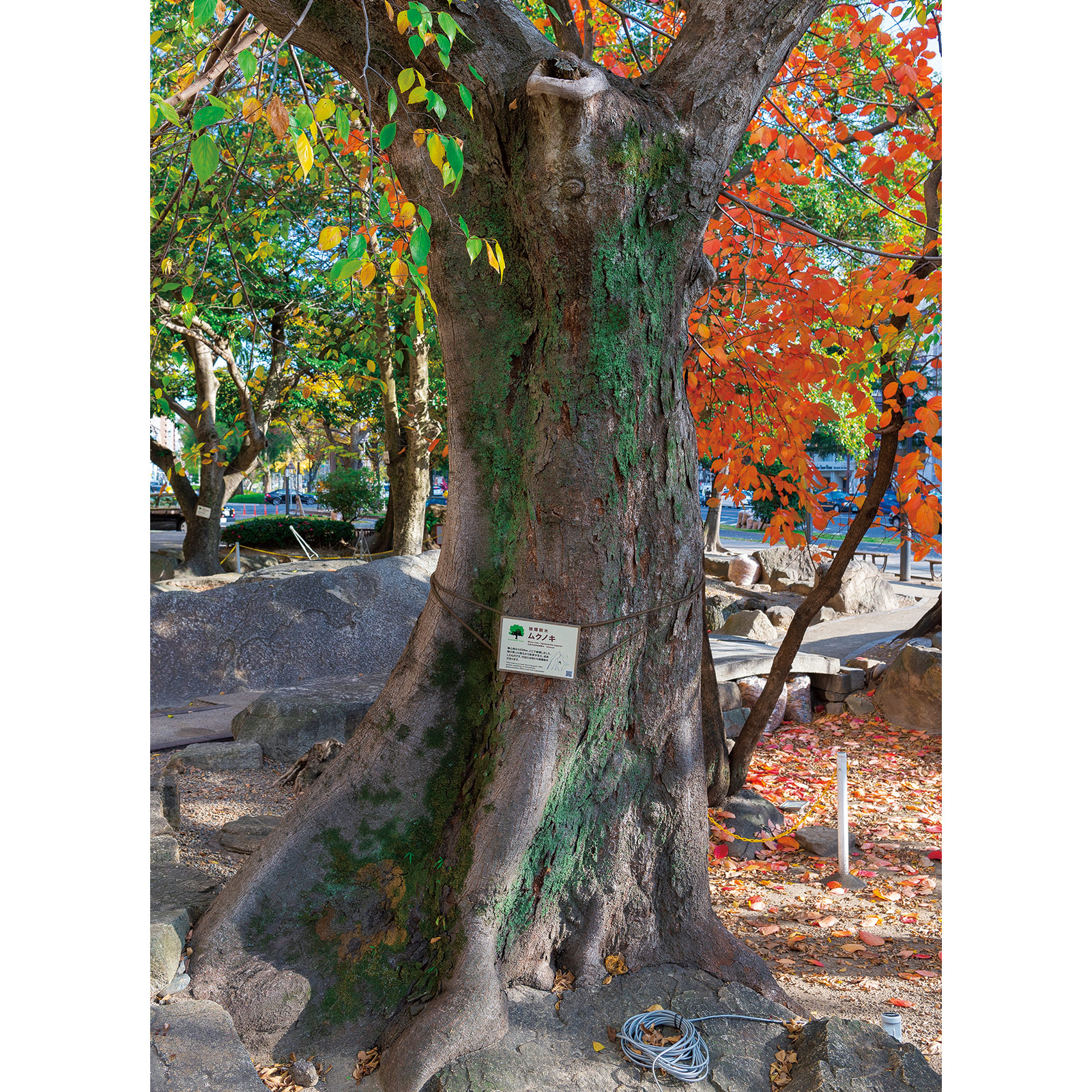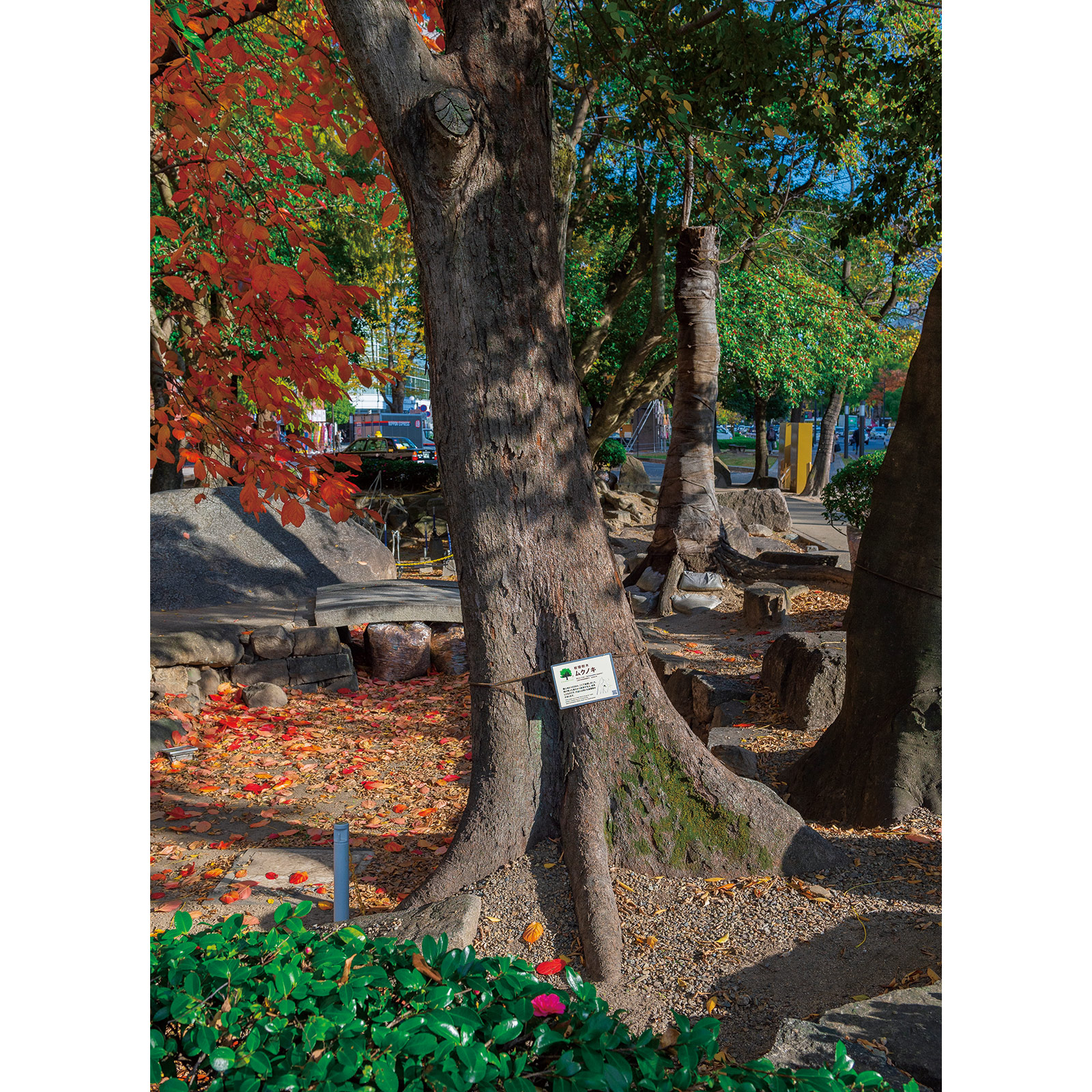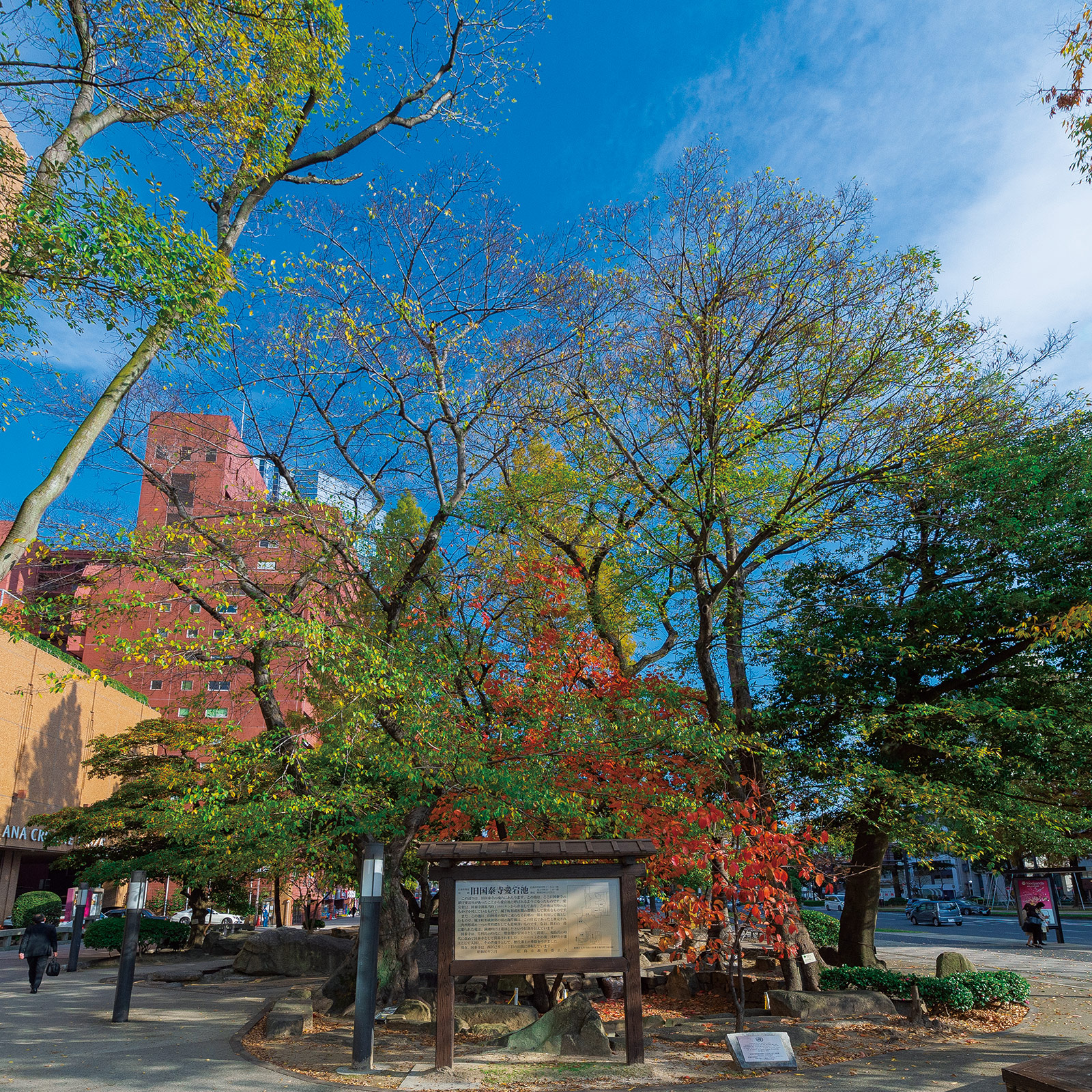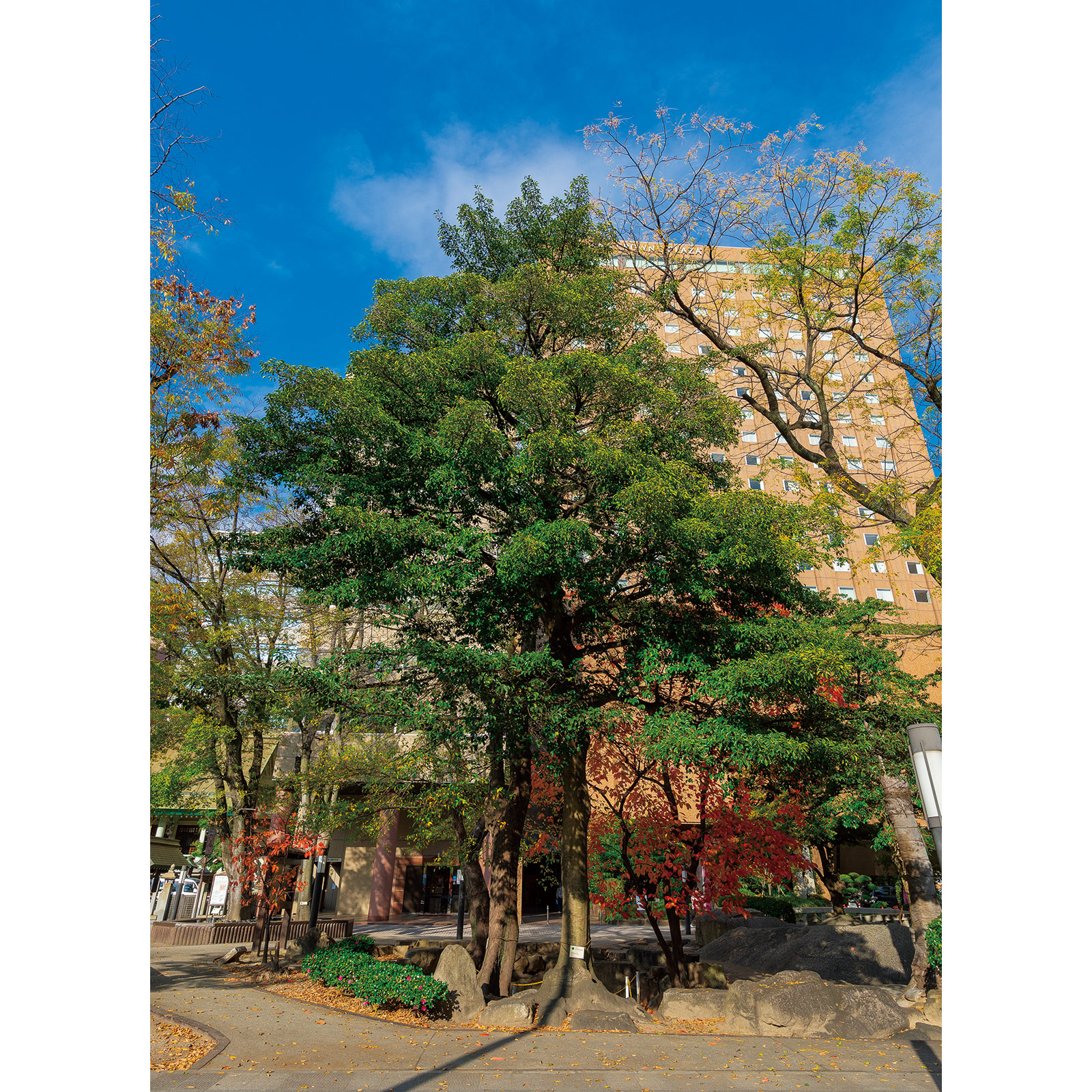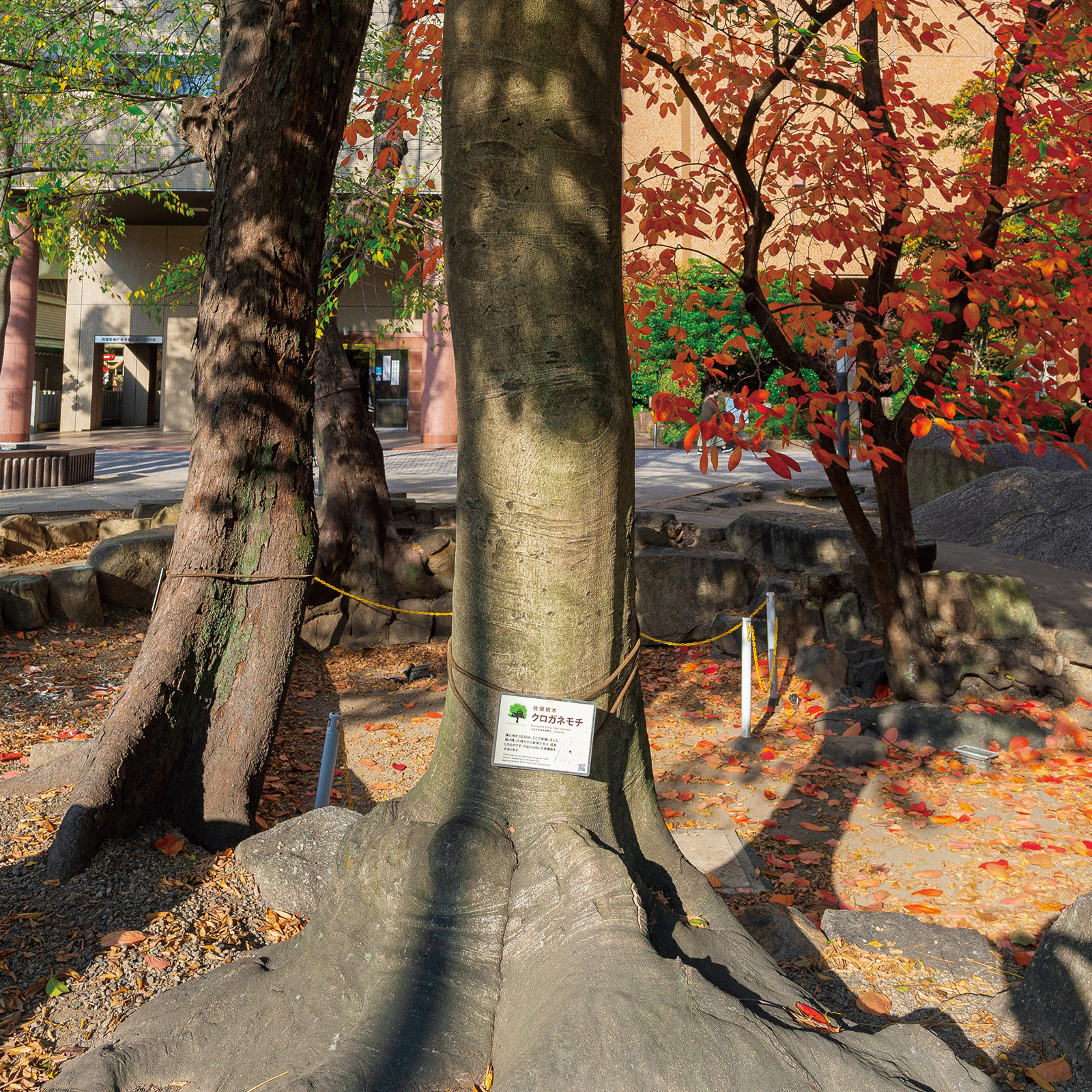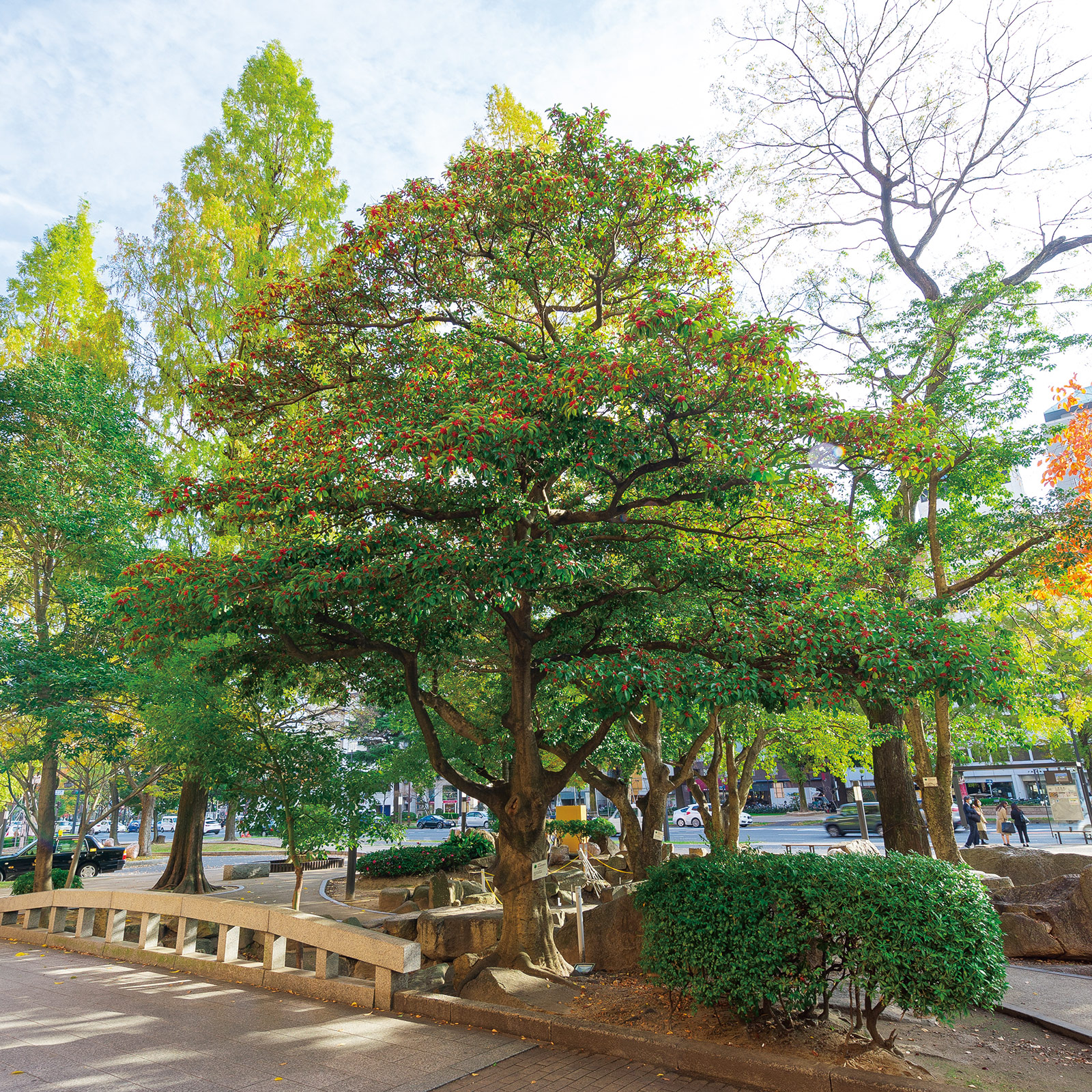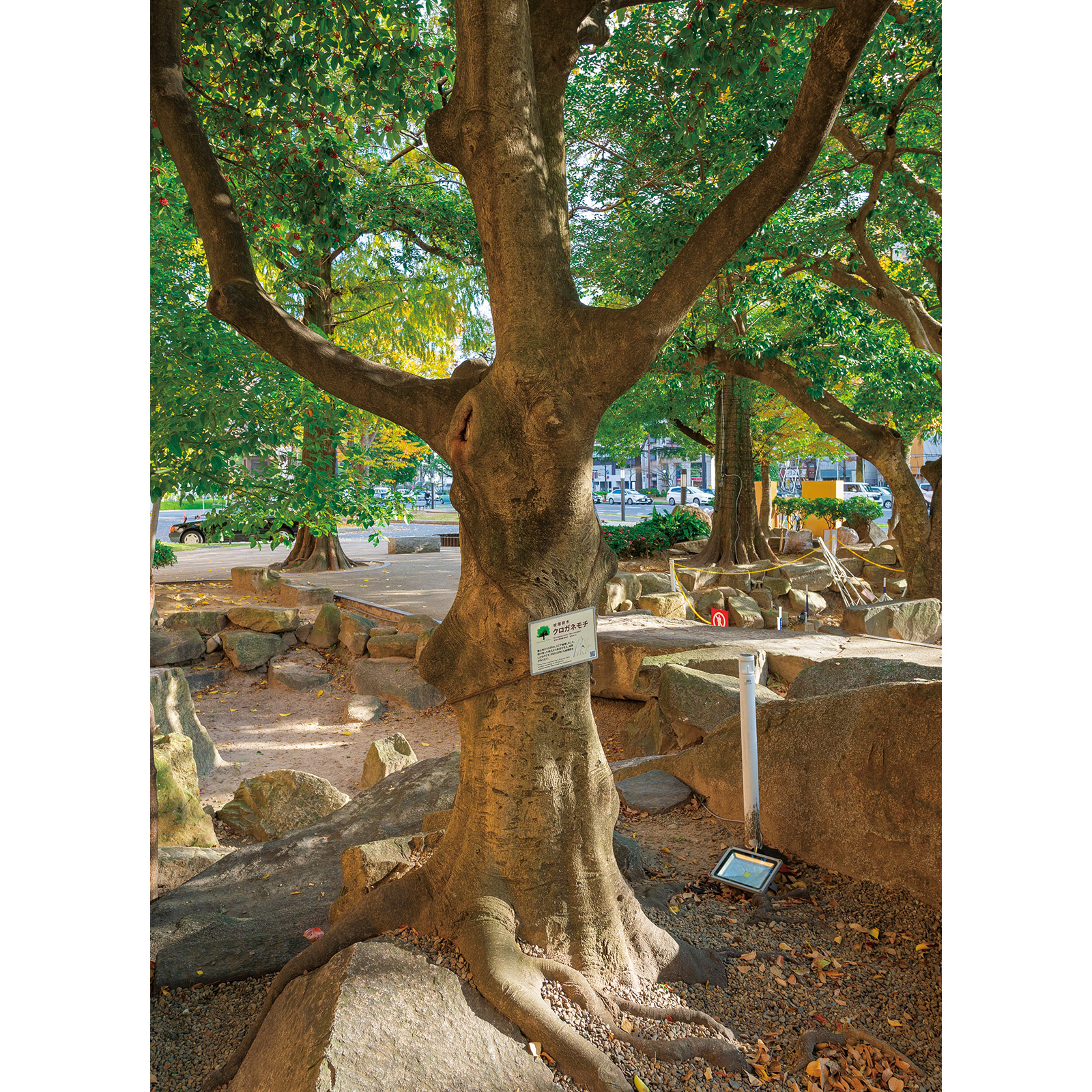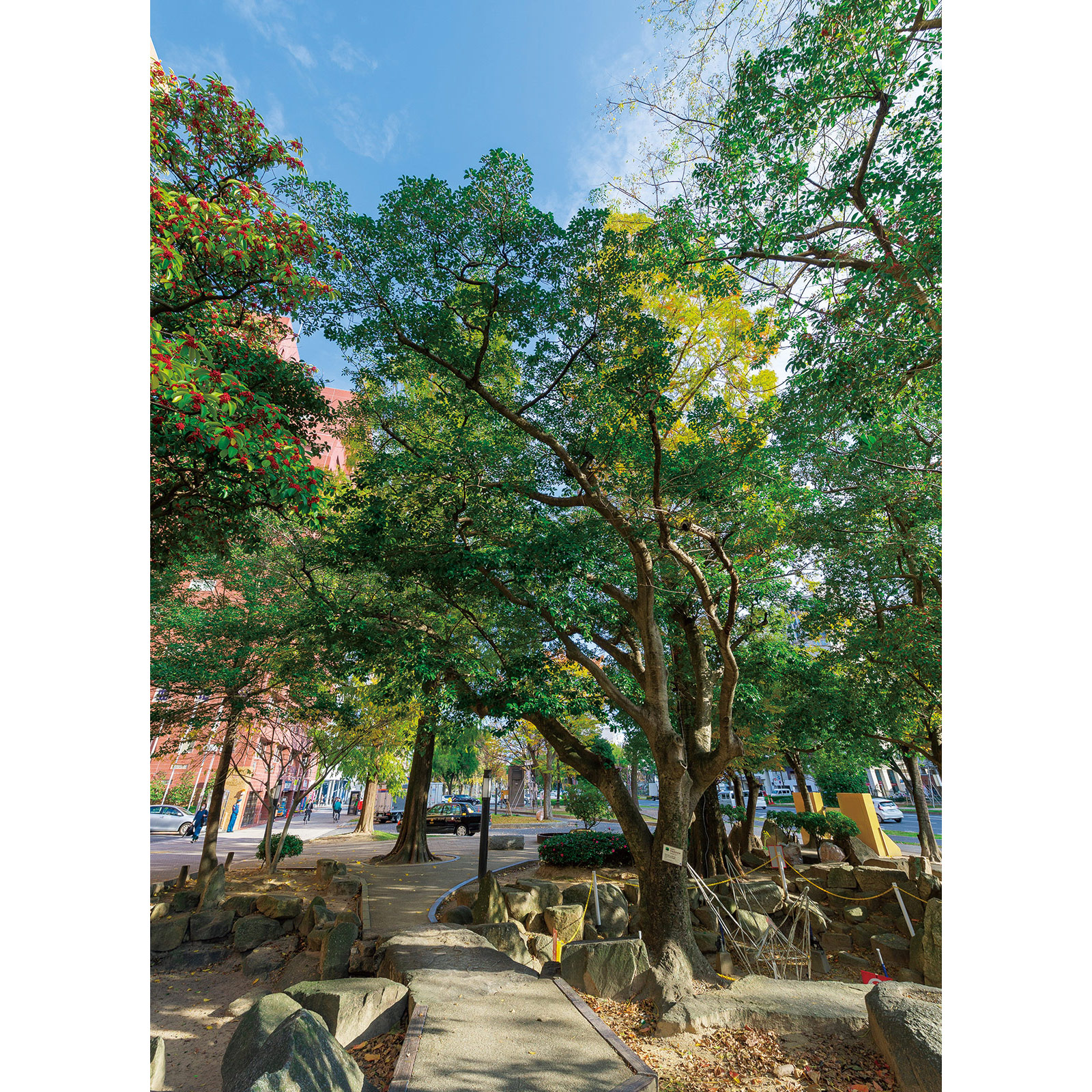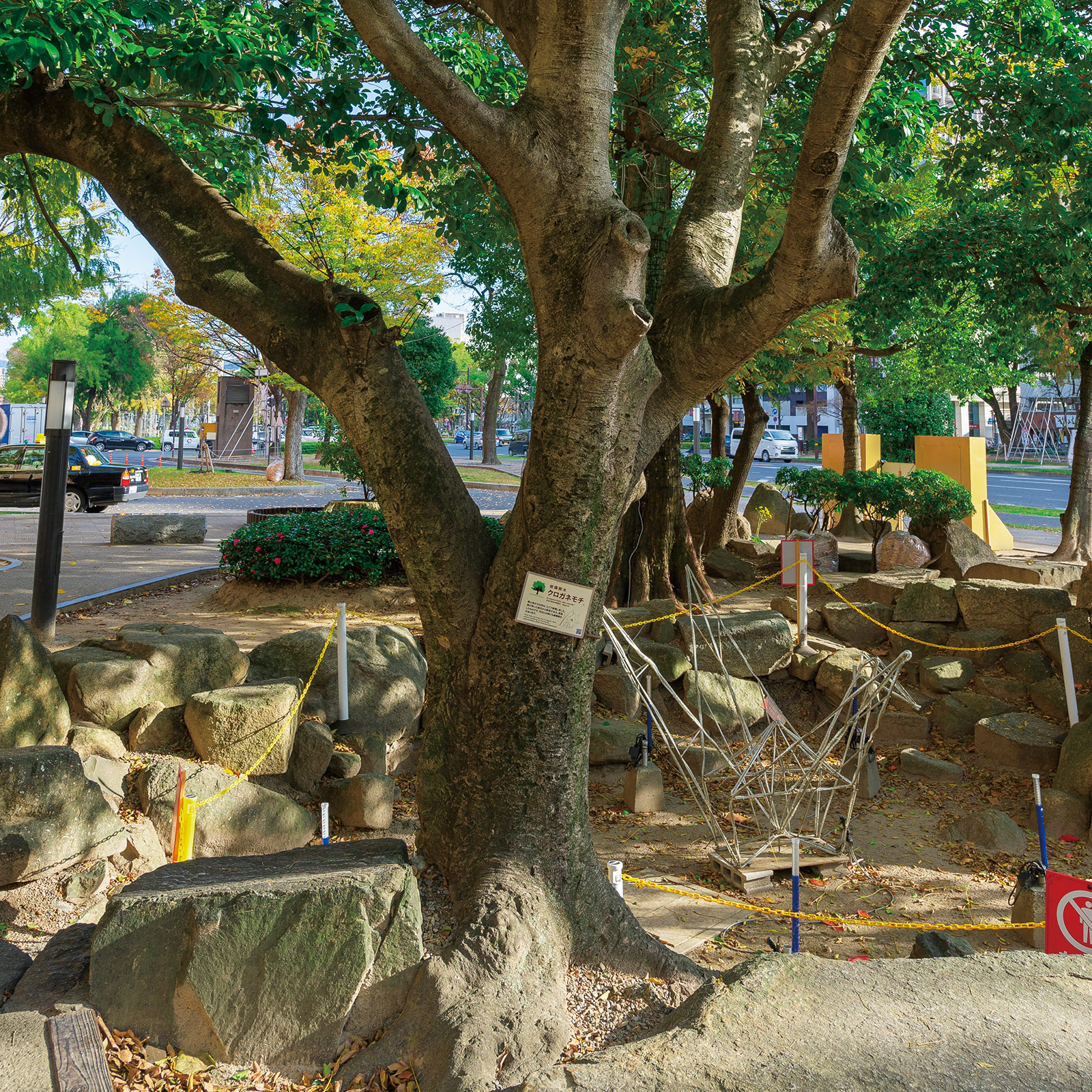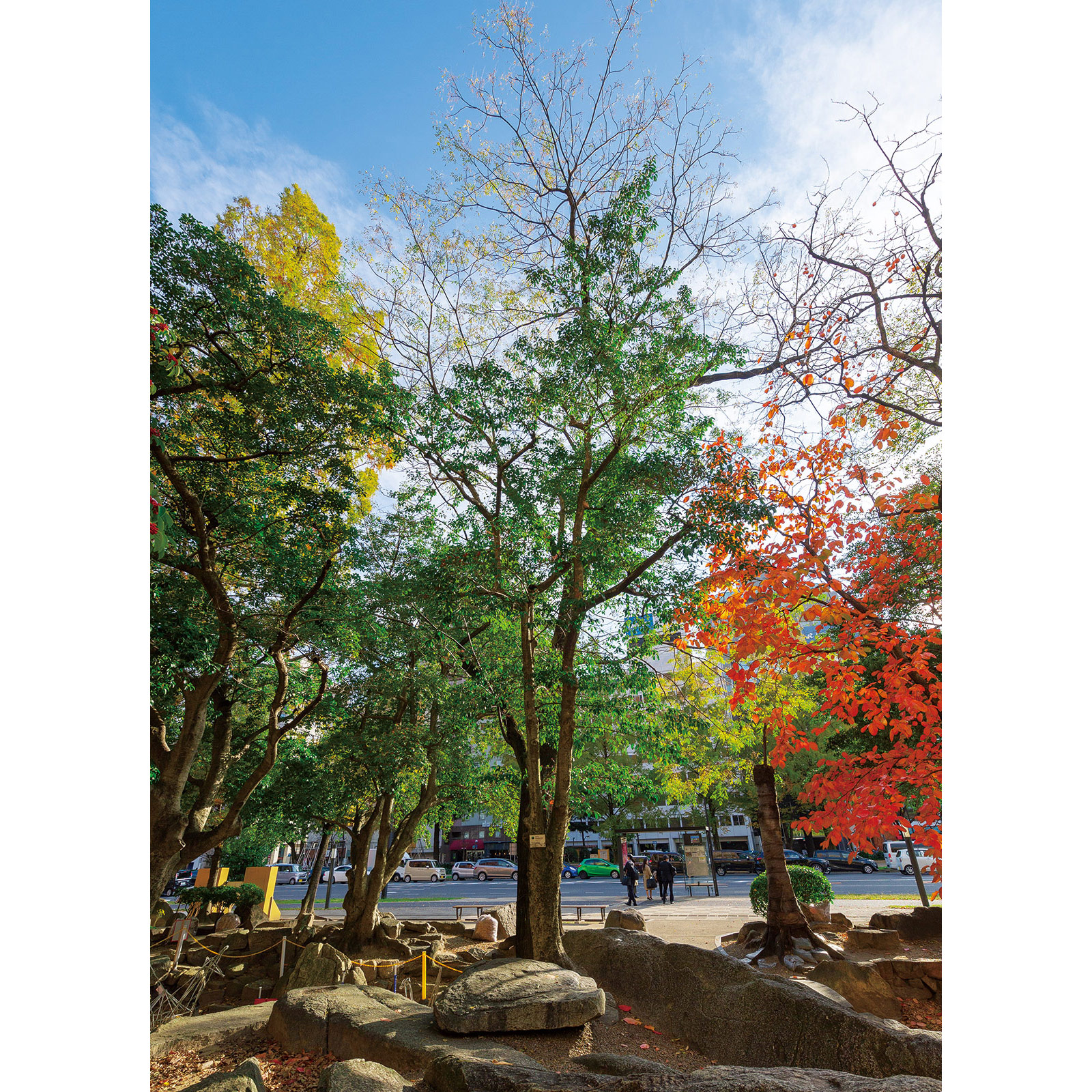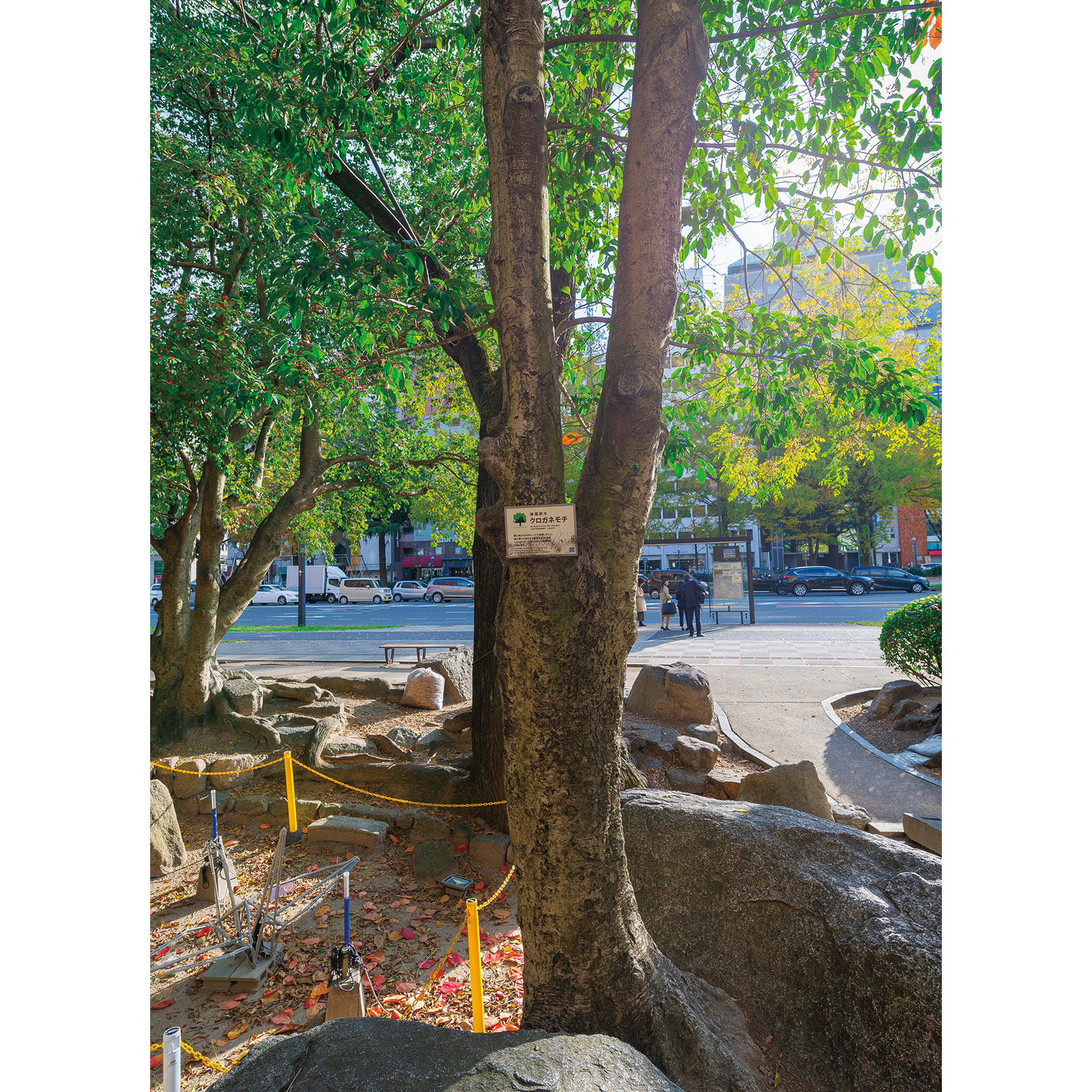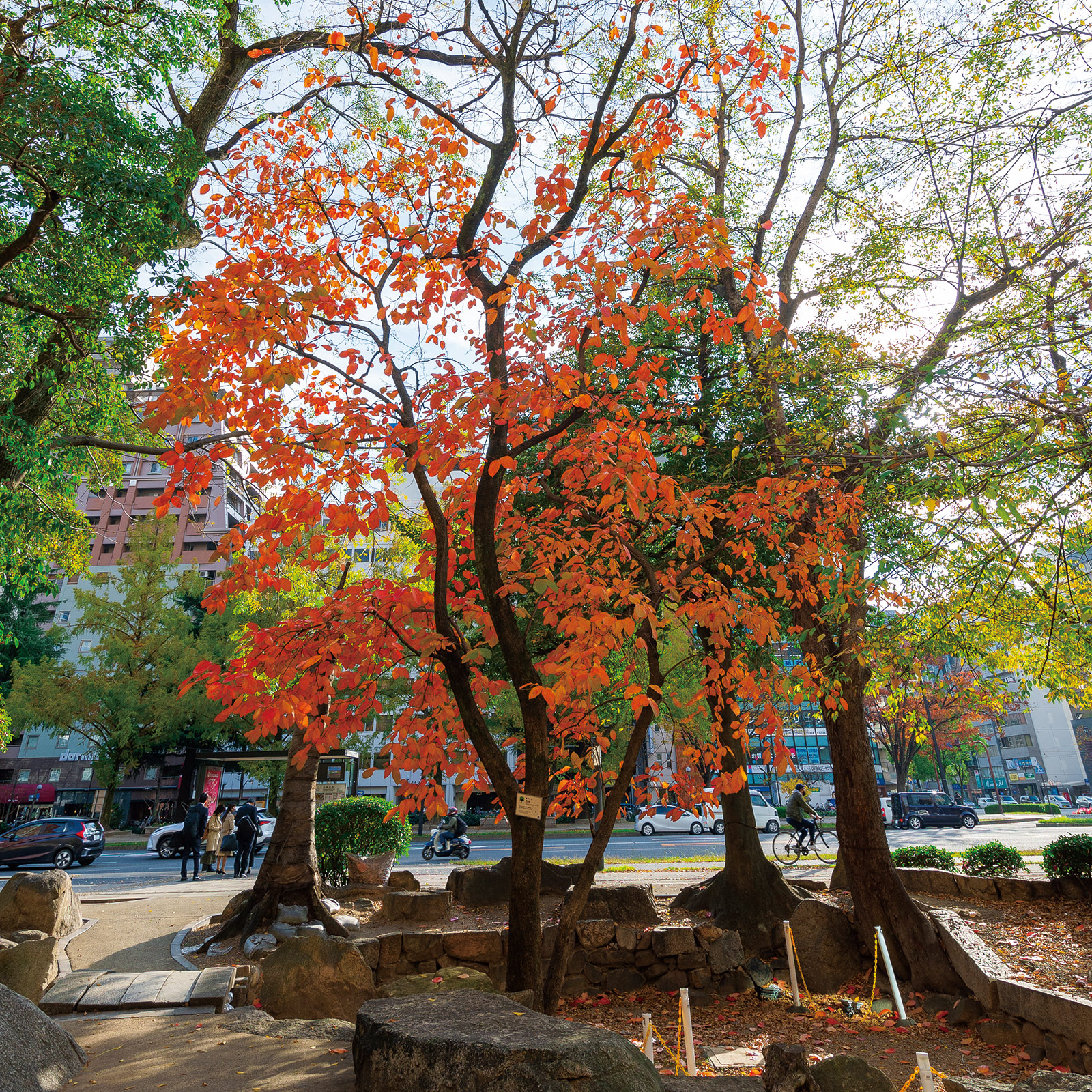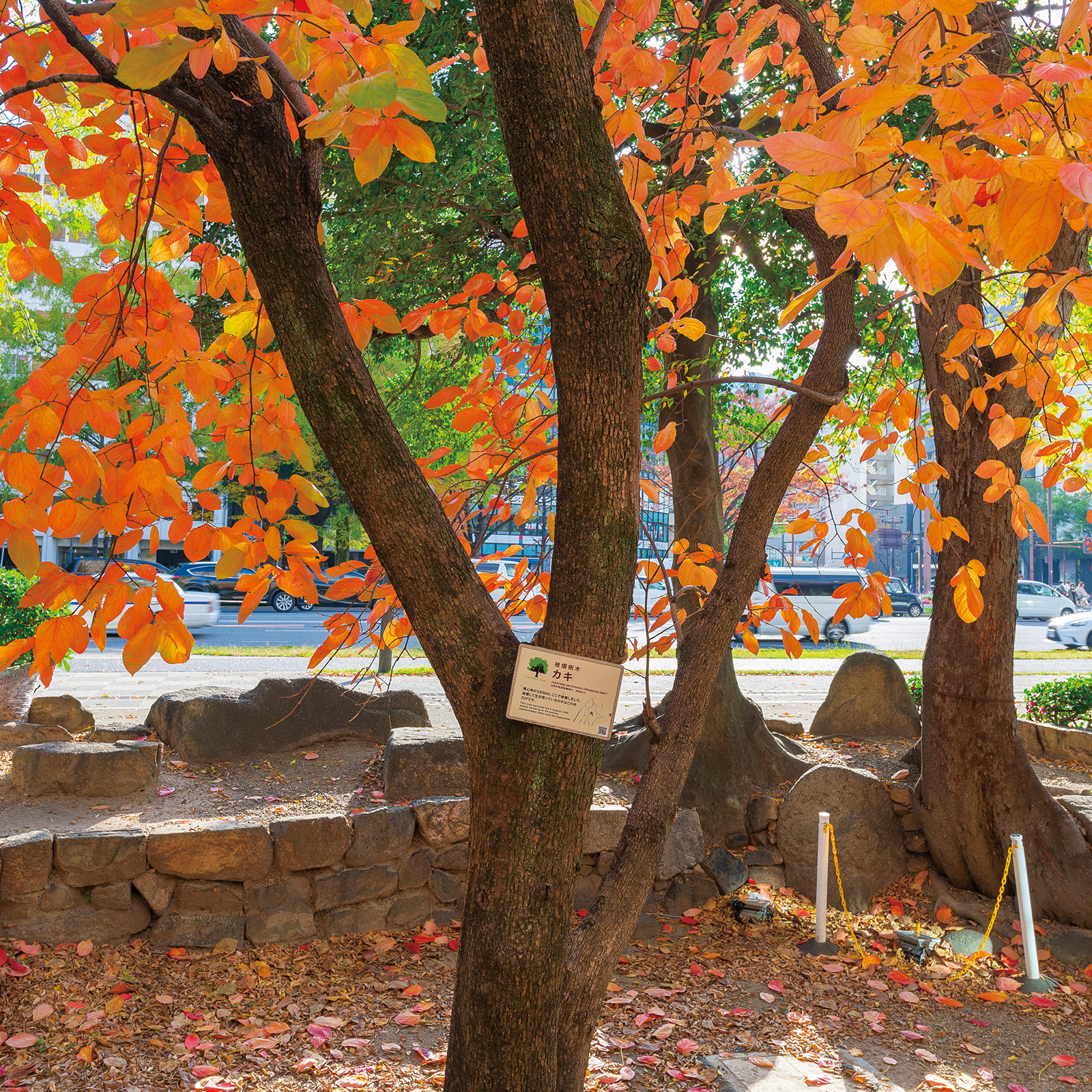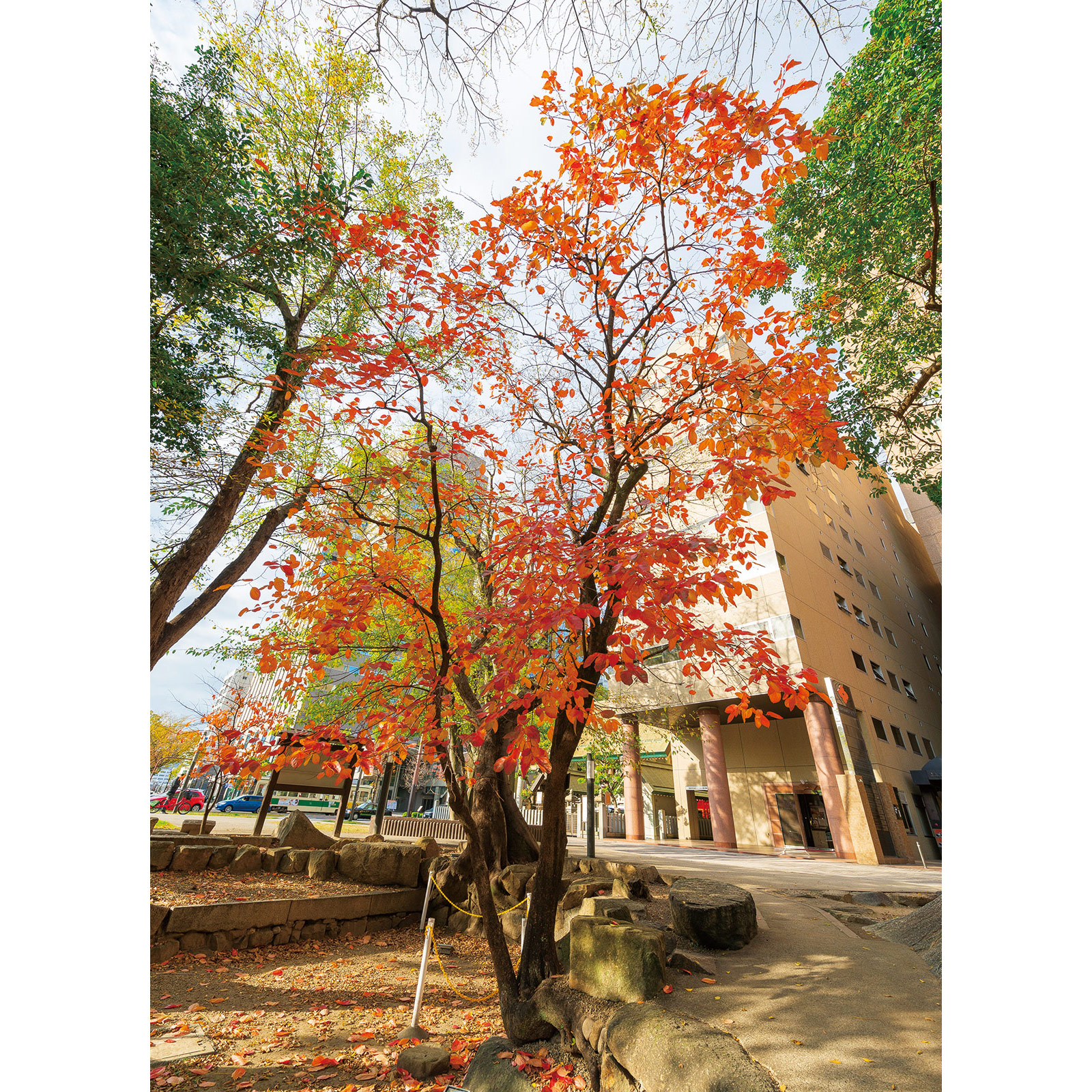平和大通りの緑地帯。旧国泰寺(きゅうこくたいじ)の愛宕池(あたごいけ)がある場所に、クロガネモチ、ムクノキ、カキ、センダン、エノキなど、12本の被爆樹木が育っています。この愛宕池の南側は、かつては海中の岩礁でした。岩礁を利用して池が造られ、周辺にはたくさんの樹木が育っていましたが、その多くが原爆によって消えてしまいました。
岩の間で育っていた木々たちも、上の部分は消失しましたが、かろうじて残った部分から息を吹き返しました。大きな岩の間に根を滑り込ませた木。岩を抱え込んだ木。根が浮き上がり、根元が肥大化した木など。必死に生きる被爆樹木の姿を見ることができます。
In the green area along Peace Boulevard where Atago Pond (from the former Kokutai-ji Temple) is, you can find twelve hibaku trees, including kurogane holly, muku, persimmon, chinaberry, and Japanese hackberry trees. The southside of Atago Pond used to be the coastline. Using a reef, they created the pond and planted many trees around it; however, many of these trees were lost in the bombing. The trees which grew in-between the rocks lost their top halves, but from the remaining bottom halves, new trees grew. There are trees which slid their roots in-between rocks, trees that grew around the rocks, as if holding them, and trees with roots that rose up from the soil and swelled. It is here that you can truly see how these trees fought desperately to survive and thrive.
